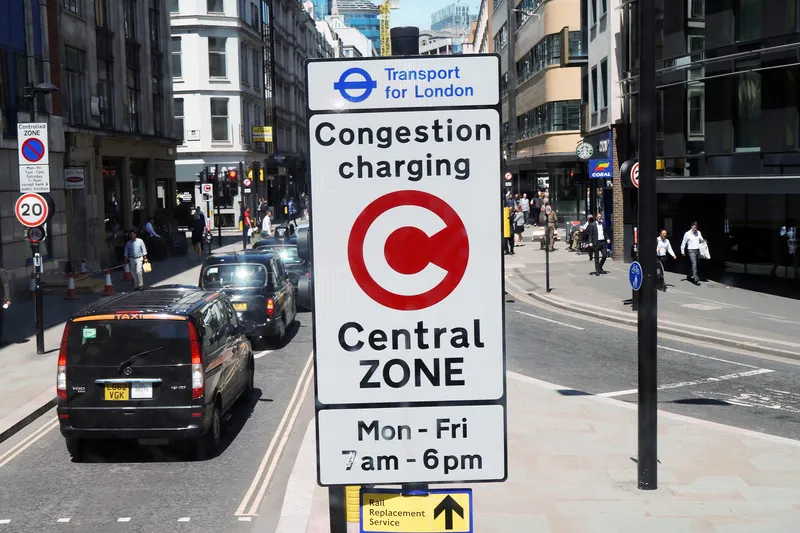The Mayor of London, Boris Johnson, has unveiled the new measures Transport for London (TfL) is introducing to ease traffic in the capital and minimise disruption on the roads as major work to improve the network continues as part of the Mayor’s US$6 billion Road Modernisation Plan.
The innovations include: Trials of new technology - for the first time on the TfL road network a new generation of digital road signs will provide people with real-time information on journeys using major routes into London.
September 30, 2015
Read time: 3 mins
The Mayor of London, Boris Johnson, has unveiled the new measures 1466 Transport for London (TfL) is introducing to ease traffic in the capital and minimise disruption on the roads as major work to improve the network continues as part of the Mayor’s US$6 billion Road Modernisation Plan.
The innovations include: Trials of new technology - for the first time on the TfL road network a new generation of digital road signs will provide people with real-time information on journeys using major routes into London. TfL is also trialling a new operating system of temporary traffic lights that can be remotely controlled from TfL’s traffic control centre. This will mean the phasing of traffic lights can be changed quickly and efficiently by staff at the control centre to improve traffic flow and cut delays through roadwork areas.
A London 2012 Games-style 24/7 communication campaign – each day TfL keeps its 450,000 @tfltrafficnews followers and website users up-to-date with the very latest traffic information and the calendar of works being carried out so people can plan ahead.
Expanding use of road junction technology, including the world-leading Split Cycle Offset Optimisation Technique (SCOOT), to optimise traffic light timings in outer London. The introduction of SCOOT is claimed to reduce delays by up to 12 per cent at each junction where it has been installed. By May 2016, almost 4,000 sites will be using this technology across London and by 2018, more than three-quarters of London’s 6000 junctions will be upgraded with SCOOT, helping to manage and reduce congestion.
Working with sat-nav companies and encouraging firms to take advantage of the latest technology by using TfL’s extensive data feeds to update sat-navs so motorists can be provided with real-time TfL information as they drive, ensuring they can take the most appropriate routes.
These measures are being developed to accompany existing ongoing work to ease congestion, including: Dynamically managing London’s road network using the 24/7 traffic control centre in real-time; Managing incidents and congestion hot spots through the Roads Policing Units; Working with the freight industry to retime deliveries to avoid the busiest times; A ‘lane rental scheme’ which targets roadworks at the busiest locations and busiest times. It is already seeing over 90 per cent of work carried out during quieter periods – massively reducing disruption. All surplus money raised through the Lane Rental scheme is reinvested into measures to further reduce the disruption, including trials of temporary traffic signals, new automatic roadwork monitoring cameras to allow TfL to better determine whether work is taking place and better use of rapid cure reinstatement materials to help reopen roads quicker, significantly reducing traffic disruption.
With improvement works planned until 2021/22, TfL claims its Road Modernisation Plan includes hundreds of projects to improve the streets as the capital grows in size. Across London, improvements are being delivered day and night as new cycle routes are created, traffic signals, pavements and highways are upgraded; new public spaces are made; and junctions are re-designed to make them safer.
TfL is also looking at long-term measures to tackle road congestion in the coming decades. In January, it will host an extensive exhibition outlining the latest plans for strategic measures to tackle congestion and cleaning London’s air. This will include plans for new tunnels and fly-unders that open new areas up for redevelopment, as well as measures to help keep freight deliveries serving the capital while also reducing congestion at peak-times.
The innovations include: Trials of new technology - for the first time on the TfL road network a new generation of digital road signs will provide people with real-time information on journeys using major routes into London. TfL is also trialling a new operating system of temporary traffic lights that can be remotely controlled from TfL’s traffic control centre. This will mean the phasing of traffic lights can be changed quickly and efficiently by staff at the control centre to improve traffic flow and cut delays through roadwork areas.
A London 2012 Games-style 24/7 communication campaign – each day TfL keeps its 450,000 @tfltrafficnews followers and website users up-to-date with the very latest traffic information and the calendar of works being carried out so people can plan ahead.
Expanding use of road junction technology, including the world-leading Split Cycle Offset Optimisation Technique (SCOOT), to optimise traffic light timings in outer London. The introduction of SCOOT is claimed to reduce delays by up to 12 per cent at each junction where it has been installed. By May 2016, almost 4,000 sites will be using this technology across London and by 2018, more than three-quarters of London’s 6000 junctions will be upgraded with SCOOT, helping to manage and reduce congestion.
Working with sat-nav companies and encouraging firms to take advantage of the latest technology by using TfL’s extensive data feeds to update sat-navs so motorists can be provided with real-time TfL information as they drive, ensuring they can take the most appropriate routes.
These measures are being developed to accompany existing ongoing work to ease congestion, including: Dynamically managing London’s road network using the 24/7 traffic control centre in real-time; Managing incidents and congestion hot spots through the Roads Policing Units; Working with the freight industry to retime deliveries to avoid the busiest times; A ‘lane rental scheme’ which targets roadworks at the busiest locations and busiest times. It is already seeing over 90 per cent of work carried out during quieter periods – massively reducing disruption. All surplus money raised through the Lane Rental scheme is reinvested into measures to further reduce the disruption, including trials of temporary traffic signals, new automatic roadwork monitoring cameras to allow TfL to better determine whether work is taking place and better use of rapid cure reinstatement materials to help reopen roads quicker, significantly reducing traffic disruption.
With improvement works planned until 2021/22, TfL claims its Road Modernisation Plan includes hundreds of projects to improve the streets as the capital grows in size. Across London, improvements are being delivered day and night as new cycle routes are created, traffic signals, pavements and highways are upgraded; new public spaces are made; and junctions are re-designed to make them safer.
TfL is also looking at long-term measures to tackle road congestion in the coming decades. In January, it will host an extensive exhibition outlining the latest plans for strategic measures to tackle congestion and cleaning London’s air. This will include plans for new tunnels and fly-unders that open new areas up for redevelopment, as well as measures to help keep freight deliveries serving the capital while also reducing congestion at peak-times.









